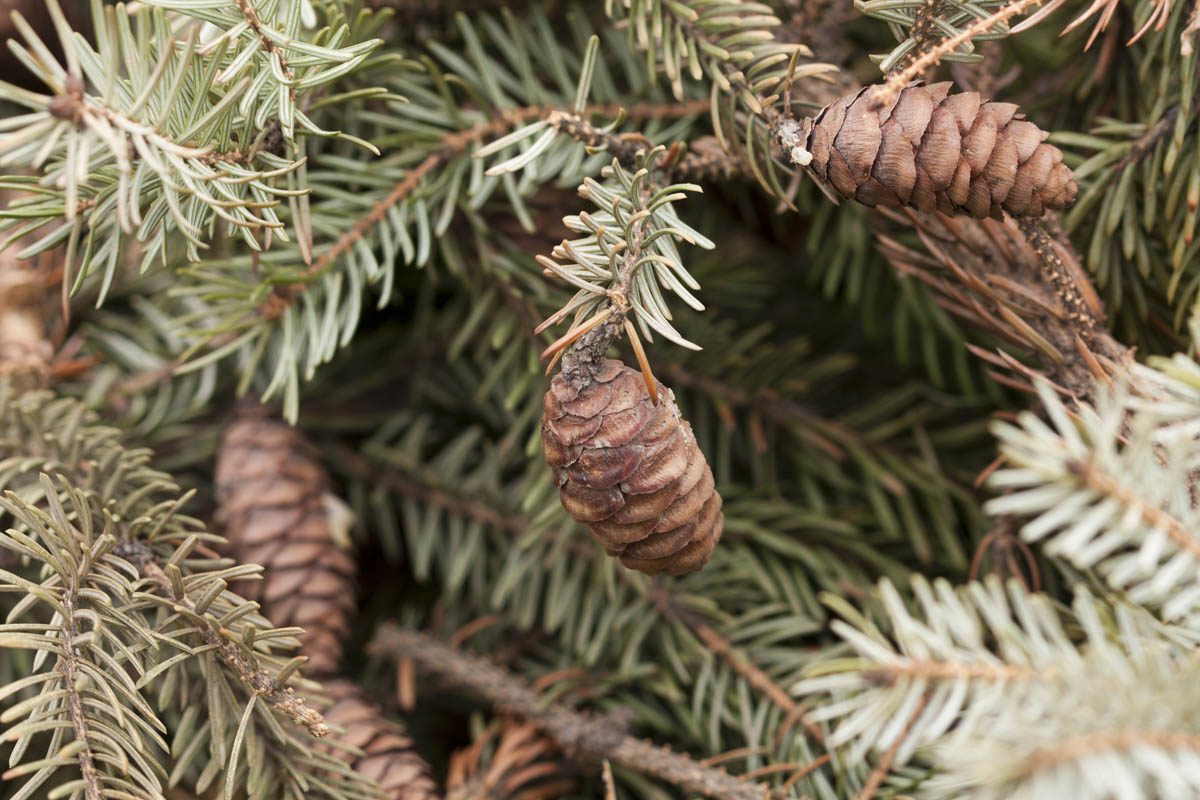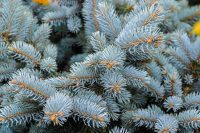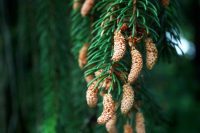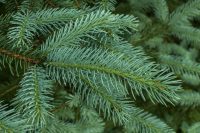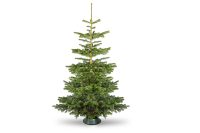Serbian spruce (Picea omorika) is non-toxic to dogs and is safe to keep in homes with pets as long as precautions are taken.
What is Serbian spruce?
| Family | Pinaceae – Pine |
| Botanical name | Picea omorika |
| Common names | Serbian spruce, Bosnian spruce, Omorica |
| Mature height | 50 – 60 feet (15-18 metres) |
| Needle retention | Good |
| Scent | Citrus |
| Native to | Southeastern Europe |
| Toxicity | Non-toxic |
A close relative of the Norway spruce, the Serbian spruce is a medium-sized evergreen with dark green leaves on the top and silver blue on the underside. Serbian spruce grows in a narrow pyramidal shape, with branches that curve upwards and leaves are approximately 1.25 – 2.5 cm (1/2 – 1 inch) long, and rounded at the tip.
As a narrower tree, the Serbian spruce can fit into smaller corners than the Norway spruce. The leaves impart a citrus smell when crushed.
Related: Caring for a Christmas tree
Safety
While Serbian spruce is non-toxic to dogs, care must be taken to keep pets safe.
- Always secure the tree to a wall with fishing wire to prevent it from being toppled over.
- Unplug Christmas tree lights when they are not in use, or there is nobody there to supervise.
- Do not place edible decorations on the Christmas tree.
- Take care with tree preservers, aspirin or fertilisers in the tree water bowl, due to their toxicity and do not let pets drink out of the water reservoir.
- Place breakable objects higher up on the tree and non-breakable ones lower down.
- Avoid angel hair tinsel which can be injested and cause a linear foreign body obstruction.
- Clean up dropped needles regularly.
- Do not use fake snow on the tree.
Toxicity of common Christmas trees
Common name |
Scientific name |
Toxicity level |
| Norway spruce | Picea abies | Non-toxic |
| Blue spruce | Picea pungens | Non-toxic |
| Serbian spruce | Picea omorika | Non-toxic |
| White spruce | Picea glauca | Non-toxic |
| Nordmann fir | Abies nordmanniana | Non-toxic |
| Fraser fir | Abies fraseri | Non-toxic |
| Douglas fir | Pseudotsuga menziesii | Non-toxic |
| Noble fir | Abies procera | Non-toxic |
| Balsam fir | Abies balsamea | Non-toxic |
| Grand fir | Abies grandis | Non-toxic |
| Scotch pine | Pinus sylvestris | No information available |
| White pine | Pinus strobus | No information available |
| Virginian pine | Pinus virginiana | Toxic |
| Norfolk Island pine, house pine | Araucaria heterophylla | Non-toxic |
Julia is a writer and landscape consultant from Wollongong with a love of horticulture. She had been an avid gardener for over 30 years, collects rare variegated plants and is a home orchardist. Julia is passionate about learning and sharing her knowledge of plant propagation and plant toxicology. Whether it’s giving advice on landscape projects or sharing tips on growing, Julia enjoys helping people make their gardens flourish.
